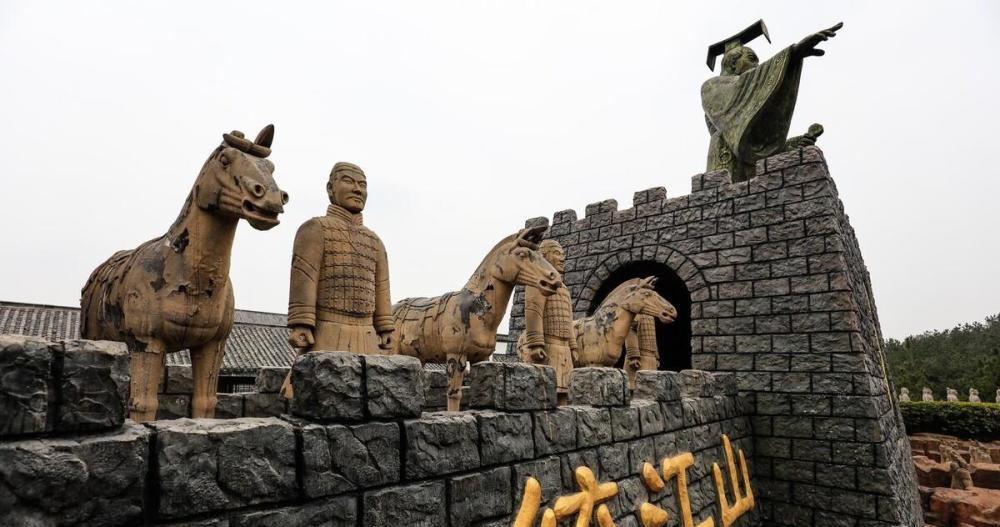Three great splits
Throughout the 5,000 years of Chinese history, there have been three periods of great division. They are the Spring and Autumn Warring States Period, the Five Hu and Sixteen Kingdoms, the Southern and Northern Dynasties Period, and the Five Dynasties and Ten Kingdoms Period. The Spring and Autumn Warring States began with the eastward migration of King Ping of Zhou in 771 BC to the unification of the country by Qin Shi Huang in 221 BC, which lasted for 550 years. During the Five Hu and Sixteen Kingdoms and the Southern and Northern Dynasties, from Liu Yuan's establishment of the Han Zhao regime in 304 AD to the unification of the Sui Dynasty in 589 AD, it lasted 286 years. The Five Dynasties and Ten Kingdoms period lasted 72 years from the fall of the Tang Dynasty in 907 AD to the unification of the whole country by the Song Dynasty in 979 AD. Although the Five Dynasties and Ten Kingdoms lasted relatively short, the dynastic changes in the Central Plains were frequent, and the division of the Ten Southern Kingdoms was also a major split.

Crippled the Six Kingdoms
Qin Shi Huang began his attack on Korea in 230 BC and ended in 221 BC, which lasted ten years and destroyed the Six Kingdoms. However, it is not known that in the 30 years before the unification of Qin Shi Huang, King Zhaoxiang of Qin, who reigned for 56 years, had already crippled the Six Kingdoms through the Battle of Changping, the Battle of Yique, the Battle of Yanyin, and the Battle of Huayang. While Fan Sui's strategy of long-distance and close attacks frequently worked, bai qi, the god of war, led the tiger and wolf division of the Qin state again and again to light up the butcher's knife against the six kingdoms.
Two out of three
The time advanced to 560 AD, and the 17-year-old Northern Zhou Wu Emperor Yuwen Yong took the throne. The clever and studious emperor also had a very deep city government. At this time, the Northern Zhou regime was controlled by Yuwen Hu, a powerful minister who held military power. In the face of this domineering uncle, which lasted 12 years of forbearance, the 29-year-old Yuwen Yong ended Yuwen Hu's life with a jade. Yuwen Yong, who had monopolized power, developed the economy of Northern Zhou by destroying Buddhism and attacking the clans; the implementation of the prefectural military system strengthened military strength. During his reign, he attacked Northern Qi, unified the north, and occupied the upper reaches of the Yangtze River, forming a favorable offensive posture for the Chen Dynasty in the south, which can be described as two of the three worlds.
"Ten years to open up the world, ten years to feed the people, ten years to the peace"
Chen Qiao's mutiny and the addition of the yellow robe are a classic operation of Zhao Kuangyin, the grandfather of the Song Dynasty, to the throne, and the embodiment of his superb political skills. And once, he was also a warrior, each other, his boss was Zhou Shizong Chai Rong. Chai Rong, who came from the bottom of the family, is well aware of the sufferings of the people. After taking the throne, he took the great cause of reunification as his own responsibility and made the grand vision of "opening up the world in ten years, raising the people in ten years, and bringing peace in ten years". During his reign, northern Zhou was politically clear, economically prosperous, and the soldiers were well fed. In foreign wars, he defeated Western Shu, broke the Southern Tang, occupied a large area of land, and the territory of Northern Zhou expanded rapidly. What is even more valuable is that Northern Zhou also defeated the Liao state, relieving the worries of going south. It should be said that at this time, the Northern Zhou Dynasty was extremely strong politically, economically, and militarily, and already had the strength to unify the whole country.
The difference in history
Different from the Late Qin Dynasty, Liu Bang's beheading of the White Snake Rebellion and the rebuilding of the great unification in five years; different from the late Sui Dynasty, Li Yuan and Jinyang raised troops and flattened the whole country for more than ten years; different from the Zhu Yuanzhang Red Turban Rebellion at the end of the Yuan Dynasty, which established a unified Daming in more than ten years. The great division to the great unification will experience the continuous struggle of several generations or even several dynasties, during which a generation of male lords will rise. King Zhaoxiang of Qin, Emperor Wu of Northern Zhou, and Emperor Shizong of Later Zhou were all great masters of Chinese history, and their talents were no less than or even stronger than those of the emperors who unified the world in later generations, but the destiny of heaven did not return, and the heavens did not leave the year. Dynasties laid the foundations of great unification in their hands, but history did not give them the opportunity to unify the world.
The God of History is generous, it provides you with a stage to show yourself; but it is also miserly, and it knows that the transition from great division to great unity cannot be accomplished by one generation. Therefore, King Zhaoxiang of Qin, Emperor Wu of Northern Zhou, and Emperor Shizong of Later Zhou, let you be heroic and heroic, and your mission in life is only to lay the foundation for unification. The so-called "extraordinary things need to wait for extraordinary people", to complete the glorious mission of unification, the god of history has already arranged others.